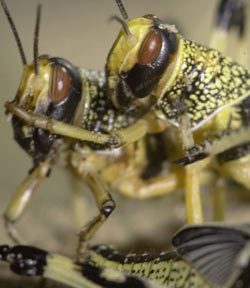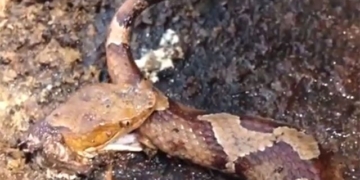The Bible once described them as a plague of insects sweeping through the winds and devouring everything in the land of Egypt. Now, scientists have pinpointed the exact moment when a chaotic swarm of locusts transforms into an organized, unified force, sometimes becoming a nightmare.
 |
| Photo: LiveScience |
When examining a group of desert locusts, researchers discovered that at low densities, these insects flew in a disorganized manner, each taking its own path. However, as the group density increased, the locusts began to align in an orderly fashion and started flying in the same direction.
This discovery could aid in controlling these pests that threaten crops or spread diseases.
The mechanisms behind this rapid transition from chaos to order are also beneficial for scientists to better understand how animals leverage group behavior for foraging, migration, and evading predators.
“Collective movement is all around us“, stated research team leader Jerom Buhl from the University of Sydney, Australia. “We are all familiar with the sight of ants forming long lines foraging endlessly, flocks of birds, or schools of fish moving in perfect synchrony, and even humans during rush hours at subway stations or roundabouts“.
Previous theoretical models suggested that animals undergo a transition phase from chaos to order when trying to align with their neighbors.
Buhl and his colleagues decided to test this theory by releasing locusts into a yard and filming the process as they connected to form a group. They found that when only a few of them clustered together, they did not form a cohesive unit. When the group size increased to 10 to 25 individuals, the locusts began to move closer to each other, but still did not move uniformly.
It was only when the researchers released about 30 locusts into the yard that the swarm began to line up and fly in the same direction. They had reached a “critical point.”
“The main benefit of this seems to be that they are safer than flying alone“, said research team member Stephen Simpson, also from the University of Sydney. “When the population density increases to a level where you cannot hide anymore, you are safer in front of a predator if you join the crowd. Once you are part of the group, you have to fly in sync to search for food“.
Nevertheless, the locusts’ march still carries a degree of mystery as they have no leader and each can only communicate with the one right next to it. “Locusts do not exhibit any communication behavior when forming a swarm. Perhaps, their interactions are primarily based on visual cues and physical contacts – but we will need to verify this in the future“, Buhl said.
T. An


















































